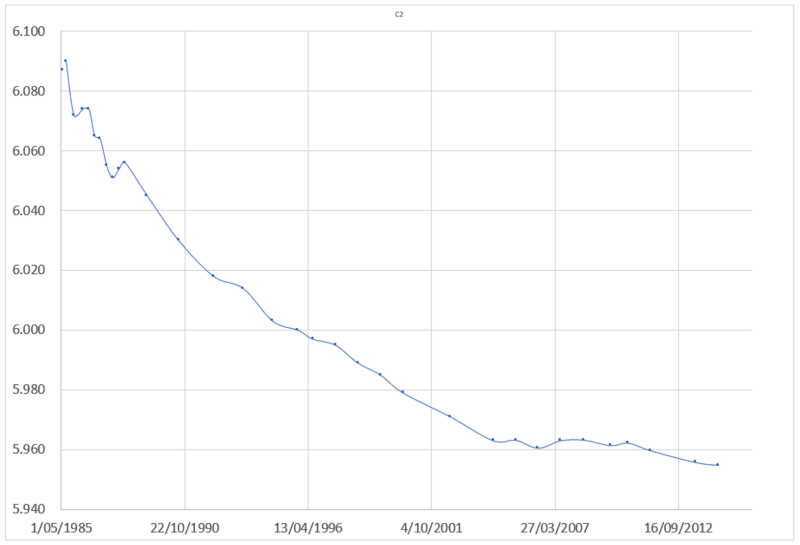Eugene Lim
Civil/Environmental
My project involves adding new loading to existing pad footings sitting on 5m fill underlain by soft soils.
I am trying to back-calculate ground compressibility parameters (compression ratio, coefficient of consolidation, permeability and pre-consolidation pressure) from 20+ years of field measurements of settlement. In the first 10 years, readings were taken every 3 months. The next 10 years and beyond, the readings were taken annually.
A plot for 1 settlement marker is shown below.

From the plot:
(1) The primary consolidation and secondary compression trends are visible.
(2) Using working loads and settlement, I determined the primary and secondary compression ratios.
(3) By 2021, primary consolidation is complete. Thus, I assume that the current pre-consolidation pressure is at the level of the working loads.
(4) I gauged in-situ permeability using CPT data.
(5) Using the above design parameters, and the new working loads (from structural designers), I shall estimate the magnitude and rate of anticipated settlement.
Q1: IS THIS APPROACH CORRECT?
Q2: ANY TIPS TO IMPROVE??
N.b.: The plotted data is slightly affected by lack of precise survey dates from 1997 onwards i.e. in the secondary compression portion - guesswork involved. I am actively trying to obtain this information and refine the plot.
I am trying to back-calculate ground compressibility parameters (compression ratio, coefficient of consolidation, permeability and pre-consolidation pressure) from 20+ years of field measurements of settlement. In the first 10 years, readings were taken every 3 months. The next 10 years and beyond, the readings were taken annually.
A plot for 1 settlement marker is shown below.

From the plot:
(1) The primary consolidation and secondary compression trends are visible.
(2) Using working loads and settlement, I determined the primary and secondary compression ratios.
(3) By 2021, primary consolidation is complete. Thus, I assume that the current pre-consolidation pressure is at the level of the working loads.
(4) I gauged in-situ permeability using CPT data.
(5) Using the above design parameters, and the new working loads (from structural designers), I shall estimate the magnitude and rate of anticipated settlement.
Q1: IS THIS APPROACH CORRECT?
Q2: ANY TIPS TO IMPROVE??
N.b.: The plotted data is slightly affected by lack of precise survey dates from 1997 onwards i.e. in the secondary compression portion - guesswork involved. I am actively trying to obtain this information and refine the plot.
